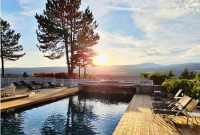Sault
41 km East of Carpentras. 28 km North of Apt.
Discover the charming village of Sault in the Vaucluse
Situated on the edge of a vast wooded plateau planted with fine lavender, Sault is a charming and very pleasant health resort perched at 776 m altitude. Here you'll discover a magnificent natural environment!
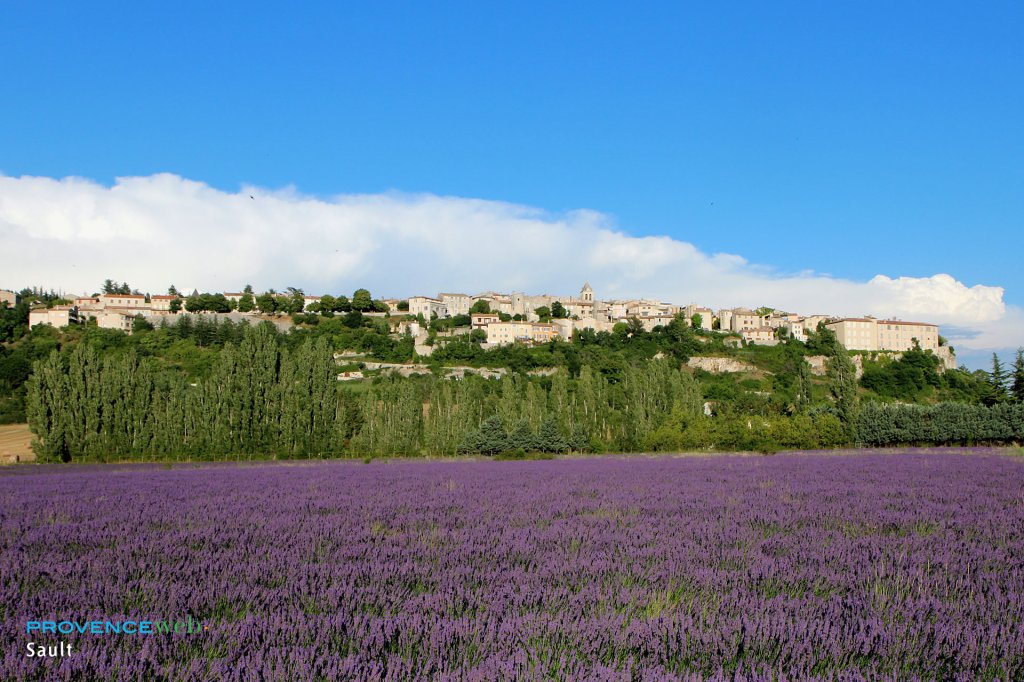
Superb lavender fields
Sault is one of the major stops on the Lavender Route (a tourist discovery route organised around distilleries, lavender fields and summer events linked to lavender). The immense blue fields spread out around the village as far as the eye can see, alternating with fields of wheat, making for a superb overall picture.
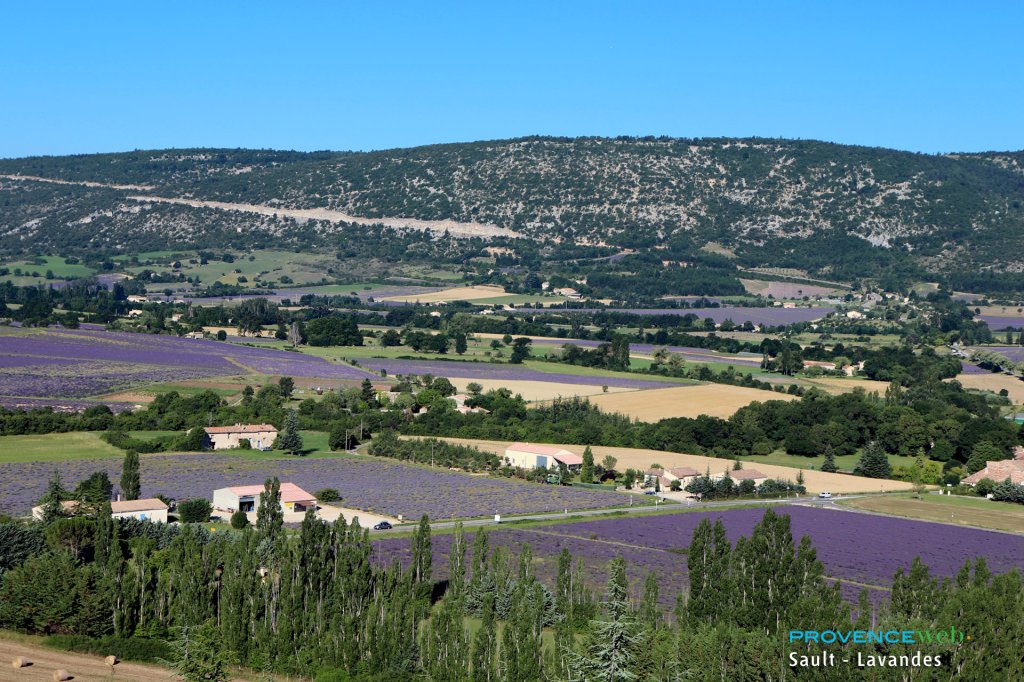
Tourism: the Lavender Festival
The Lavender Festival, held in honour of lavender on 15 August, is a great occasion with parades of folk groups and flower-decorated horse-drawn carriages, a lavender-cutting competition and, of course, an exhibition and sale of local products.
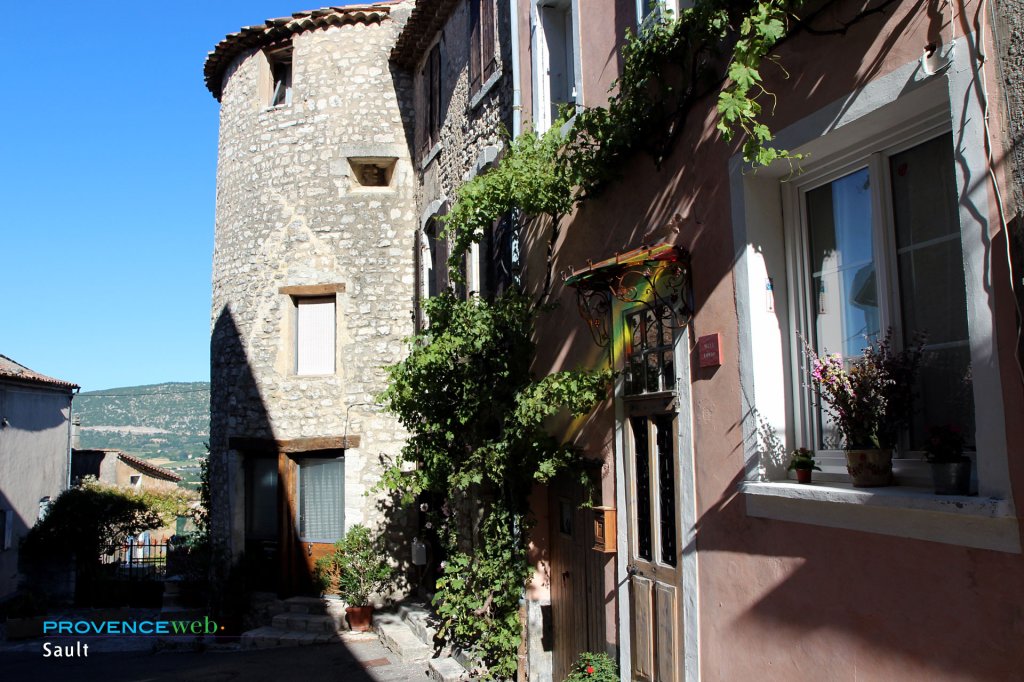
Hiking on the Sault plateau at the foot of Mont Ventoux
Sault offers its visitors a wide variety of activities to enjoy the natural environment: starting point for the ascent of Mont Ventoux, equestrian relay stations for horseback riders, chasms and caves for experienced speleologists...
Finally, don't leave Sault without tasting its nougats, macaroons and lavender honeys, all guaranteed to be 100% natural and 100% delicious!
A good restaurant to eat at in Sault
If you're looking for a good place to eat in Sault, we can recommend the restaurant ‘Le Provençal’ for its successful Mediterranean cuisine. There's also the Table du Domaine du Val de Sault, which offers fine cuisine in a beautiful setting.
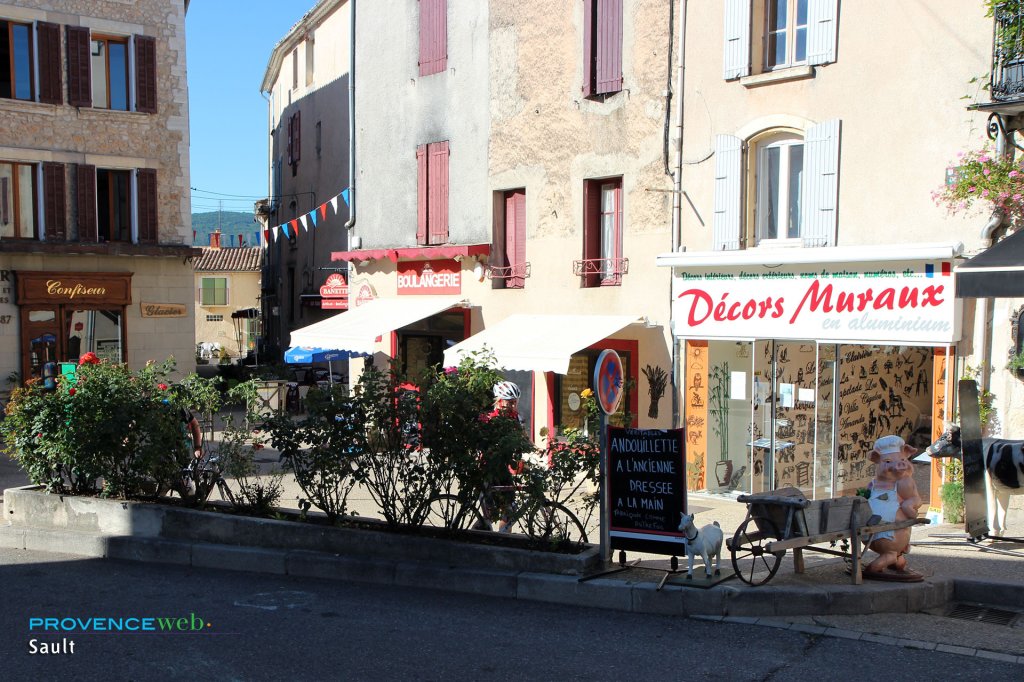
Our map of Sault en Provence
To find your way around Sault, you can use our interactive map of the village. You'll find the various points of interest in the village (town hall, tourist office, church, etc.) as well as our recommendations for accommodation in the village. You'll be able to locate them before you book your stay in Sault.
What to see
Romanesque church Notre Dame de la Tour.
Sault Museum (collections from prehistoric, Gallo Roman, and medieval times).
Leisure activities
Wednesday morning market.
Hiking. Horseback riding. Mountain biking.
Swimming pool. Tennis.
Speleology. Paragliding.
Shooting. Fishing.
Summer events.
Hotels
Rooms and suites in 10 cottages around the pool
2 indoor and outdoor pools, spa, fitness, massages
Private tennis court - Playground - Restaurant - Garden - Free Wifi
Accomodations
Hotels.
Bed and breakfast.
Vacation rentals.
Campsite.
Your questions about Sault
You have sent us several questions about the charming village of Sault. Here are our answers to your most frequently asked questions.
Where to stay in Sault?
Above you'll find our recommendations for accommodation in Sault. The best hotels (like the Domaine du Val de Sault), bed and breakfasts and holiday rentals. We update our selection every year to offer you the best possible options.
How many people live in Sault and what are their names?
There are around 1,300 inhabitants in the small village of Sault, and the trend has been stable in recent years. We call them ‘Saltésiens’ and ‘Saltésiennes’, which many people in the département don't know.
How do you pronounce Sault?
The ‘l’ in ‘Sault’ is not pronounced. The village is therefore pronounced ‘so’ with a slightly sloppy ‘o’. Many people make the mistake of pronouncing the ‘l’, especially those from outside the region. Nothing to worry about, of course, but it's good to know.
What to do in Sault?
If you come to Sault to see the lavender fields, this is a must-see. The Lavender Trail is a 5 km loop with information panels. On Wednesday mornings, the Provençal market has been bringing the village center to life since 1515. The municipal museum has prehistoric, Gallo-Roman, and medieval collections. The Notre-Dame de la Tour church, a listed historical monument, is well worth a visit. Several distilleries welcome visitors for demonstrations. The Albion plateau is ideal for hiking and mountain biking. You can also try caving, paragliding, or horse riding.
Practical information about Sault?
The tourist office is located on Avenue de la Promenade, tel. 04 90 64 01 21. Opening hours: 9:30 a.m. to 12:30 p.m. and 2 p.m. to 5 p.m. Monday to Friday, every day except Sunday afternoons from mid-June to mid-August. The town hall is located at 4 Place du Marché, and can be reached on +33 (0)4 90 64 02 30. The town has 1,348 inhabitants in 2022, known as Saltésiens. Sault is located in the Vaucluse department, in the Provence-Alpes-Côte d'Azur region, perched at an altitude of 776 meters. You will find a map of the village and a map of the routes at the tourist office. The postal code is 84390.
History of Sault?
In the 11th century, Sault entered history as a city. The seigneury belonged to the d'Agoult family, one of the great families of Provence. In 1515, an ordinance of the Baron of Sault established the Wednesday market. In 1561, Sault was elevated to a county in favor of François d'Agoult. The old 11th-century fortified castle had four defensive towers. During the Revolution, it suffered significant damage and the family archives were burned. The Notre-Dame de la Tour church has been classified as a historical monument since 1990. The ruins bear witness to the village's feudal past.
Where is Sault located?
Sault is a French commune located in the Vaucluse department, in the Provence-Alpes-Côte d'Azur region. The village is situated on a limestone plateau, on the edge of the Albion plateau. You are between Mont Ventoux and the Albion plateau. Built in a semicircle at an altitude of 765 meters, the commune overlooks the Nesque valley. Sault is 43 miles from Avignon and 77 miles from Marseille. Many departmental roads lead out of the village: the D942 and D164 to the north, and the D943 to the south. Sault is in the heart of lavender country, away from major roads.
What events are there in Sault?
The Lavender Festival takes place every August 15 at the Défends racecourse. It is one of the most important events in the Provence-Alpes-Côte d'Azur region. You can watch the French lavender cutting championship with sickles and see folk groups parade. A country meal is organized under the oak trees, which can be booked at the tourist office. The Palm Sunday fair has existed since 1515, established by decree. The Saint-Jean fair takes place on the Wednesday before Saint-Jean. The interregional santon fair takes place on the third weekend of October. The cultural calendar remains very full.

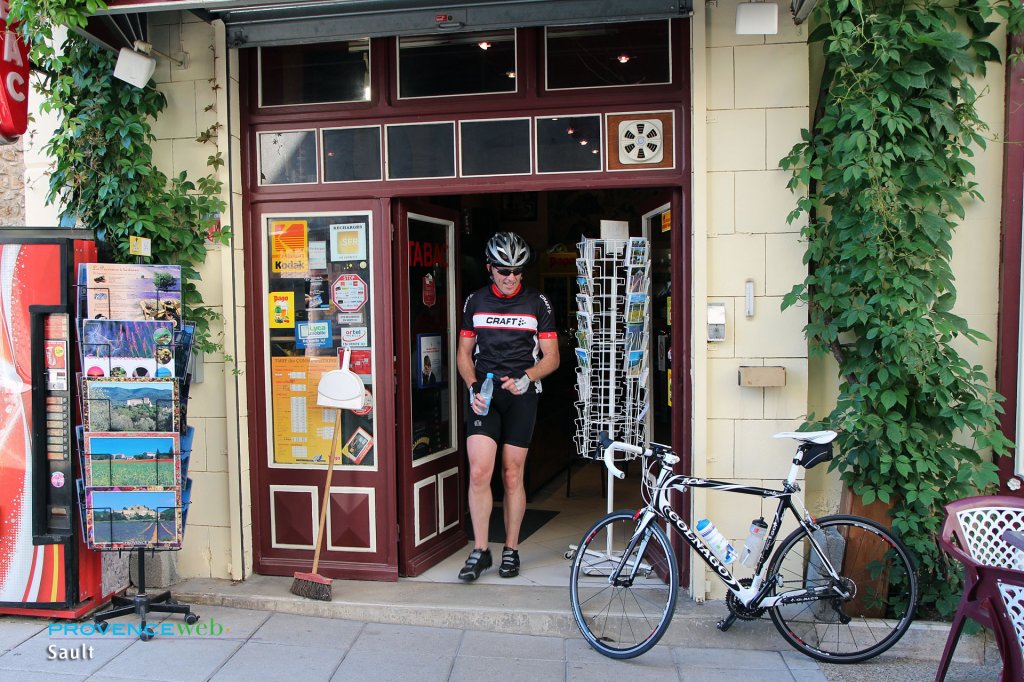




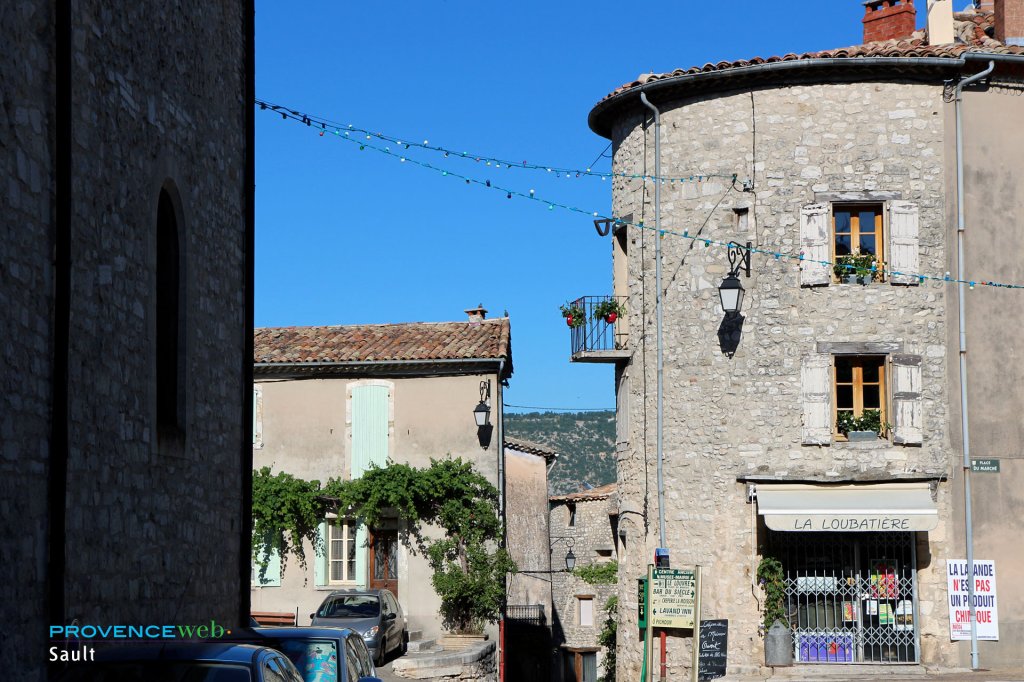

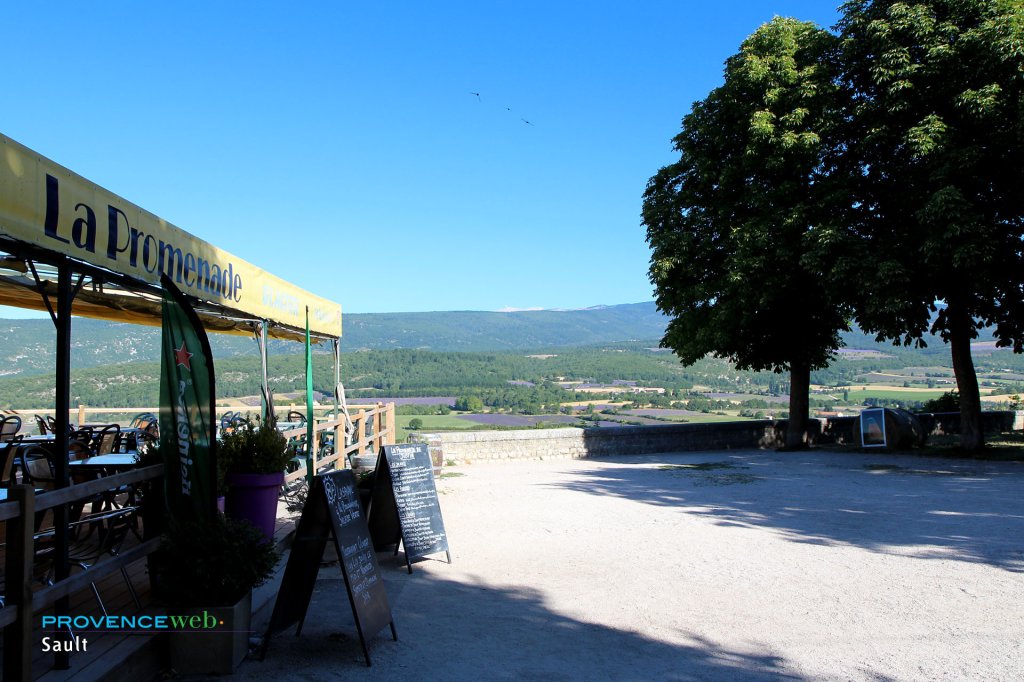

NEIGHBOURING TOWNS AND VILLAGES
Aurel (5km), Monieux (6km), Saint Trinit (7km) and Saint Christol (11km).


